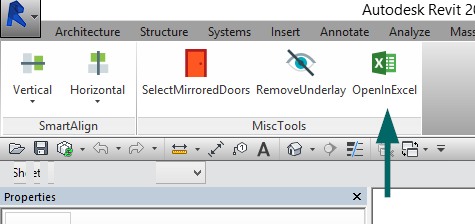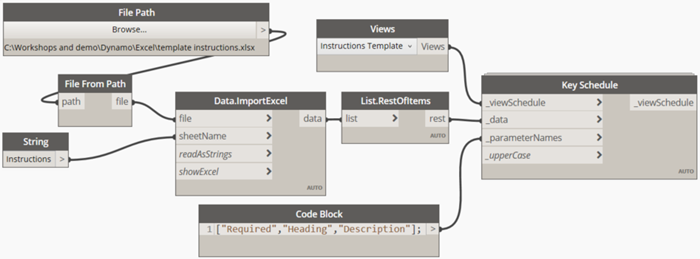Unlocking New Capabilities: Enhance Revit Tools with the Right Plugins
Wiki Article
Excel Empowerment: Supercharge Your Revit Projects With Seamless Data Import
With smooth information import, Excel empowerment can be the key to opening your job's full potential. Picture streamlining the import procedure and maximizing performance with smooth data assimilation. In this post, we will share pointers and tricks for making use of Excel in your Revit jobs.The Power of Master Revit Projects
You can supercharge your Revit projects by harnessing the power of Excel for seamless information import. Excel is a functional device that can considerably enhance your process and performance in Revit (revit add ins). With Excel, you can quickly import and take care of large quantities of information, saving you time and initiativeAmong the essential advantages of making use of Excel in Revit is its capacity to handle complicated estimations and formulas. You can utilize Excel to execute calculations on your data, such as creating amounts, calculating expenses, or analyzing performance. This can be particularly valuable when working with big jobs that call for extensive calculations.

In addition, Excel offers a user-friendly and familiar interface for functioning with information. You can organize and manipulate your data in a spread sheet style, making it very easy to view and edit. This can be especially handy when teaming up with others or when you need to make quick changes to your job data.
Additionally, Excel enables you to quickly import and export data between Revit and other software application applications. You can import data from outside sources into Revit, such as material specifications or equipment schedules, and export data from Revit to Excel for further evaluation or coverage.
Streamlining Information Import With Master Revit
Enhancing information import in Revit ends up being much easier when utilizing Excel as a tool. With Excel, you have the power to seamlessly import and manage huge quantities of data in your Revit projects. By utilizing the acquainted user interface and capability of Excel, you can save time and increase performance in your workflow.One of the vital benefits of utilizing Excel for data import in Revit is the capacity to quickly organize and adjust data before importing it right into your task. With Excel's effective attributes, such as arranging, filtering, and formulas, you can promptly tidy up and style your data to fulfill the demands of your Revit task.
In addition, Excel enables you to import data from various resources, such as data sources, spreadsheets, and even online applications. This adaptability provides you the freedom to collect information from different systems and combine it right into one main location for simple access and monitoring.
On top of that, Excel gives the choice to develop customized templates for data import in Revit. By developing design templates customized to your project's certain requirements, you can make sure uniformity and accuracy in your information import procedure.
Overall, utilizing Excel as a device for data import in Revit enhances the procedure and enhances your efficiency. So why not capitalize on this powerful device and supercharge your Revit tasks with smooth data import utilizing Excel?
Maximizing Efficiency With Seamless Information Combination
Optimize effectiveness by seamlessly incorporating and handling data in your operations. Gone are the days of by hand inputting information into your system, losing precious time and sources. With seamless information integration, you can simplify your processes and supercharge your efficiency.
Managing information ends up being a wind when you have a smooth integration system in position. You can easily organize and classify your data, making it much easier to recover and examine. Bid farewell to the days of looking through limitless spread sheets for that a person item of information you require.

Excel Idea for Revit Projects
Furthermore, revit add ins you can use Excel to develop custom-made templates for information import and export. This method, you can guarantee consistency and precision when transferring information between Revit and Excel. On the whole, grasping these Excel tricks and pointers will significantly boost your capability to take care of and adjust information in your Revit jobs.Harnessing the Excel-Revit Connection for Success
To take advantage of your Excel-Revit connection, capitalize on the capacity to effortlessly integrate and move job info. By harnessing this effective link, you can supercharge your Revit tasks and improve your workflow. With simply a few simple steps, you can import data from Excel directly right into Revit, conserving you time and guaranteeing accuracy.One of the essential advantages of the Excel-Revit connection is the ability to move data effortlessly. Whether you are importing routines, room data, or perhaps geometry details, Excel gives an easy to use user interface that allows you to arrange and control your information prior to importing it right into Revit. This means you can conveniently upgrade and modify your task information in Excel, and with a couple of clicks, move those changes directly right into your Revit design.
Along with transferring data, the Excel-Revit link likewise enables synchronization. This indicates that any type of changes made in Excel can be immediately updated in Revit, ensuring that your task information is constantly as much as day. This synchronization function is specifically valuable when managing huge and intricate tasks, as it removes the demand for manual data entrance and lowers the risk of errors.
Verdict
By simplifying data import and maximizing effectiveness with smooth data combination, you can supercharge your projects and achieve success. Don't wait any type of longer, start taking advantage of the power of Excel in your Revit jobs today and unlock a world of possibilities.You can supercharge your Revit jobs by using the power of Excel for smooth data import. With Excel, you have the power to effortlessly import and handle huge amounts of data in your Revit projects (revit plugins). On the whole, mastering these Excel pointers and tricks will considerably improve your capacity to handle and adjust data in your Revit tasks
Whether you are importing routines, area data, or also geometry information, Excel supplies a straightforward interface that allows you to organize and adjust your data prior to importing it right into Revit. By simplifying data import and maximizing efficiency with smooth data combination, you can supercharge your tasks and achieve success.
Report this wiki page